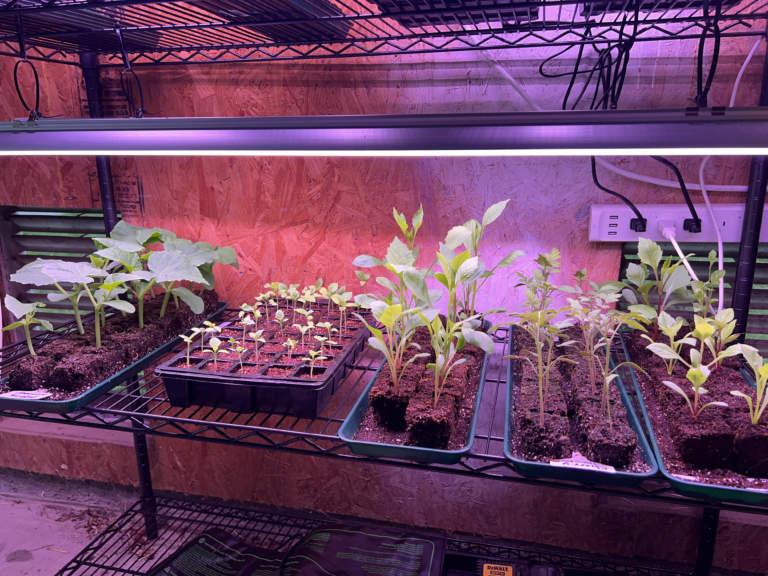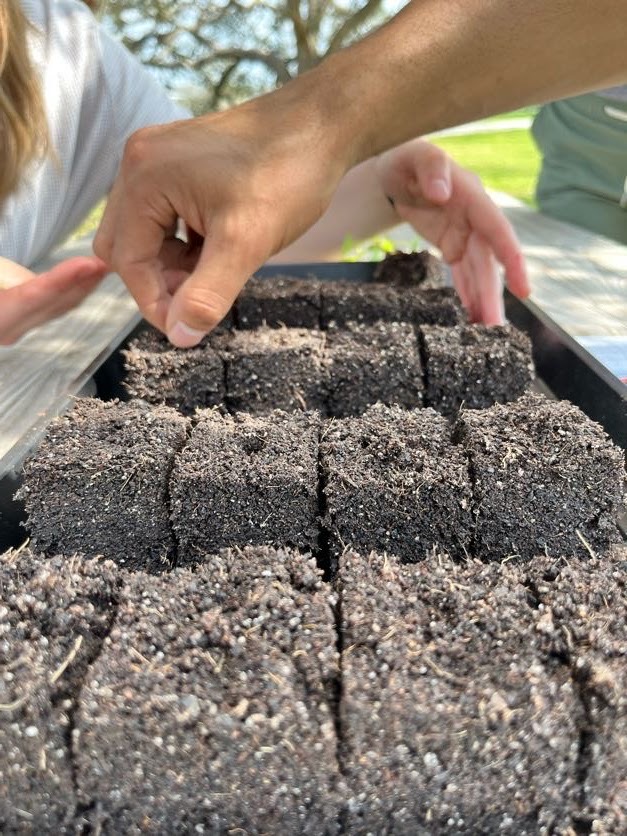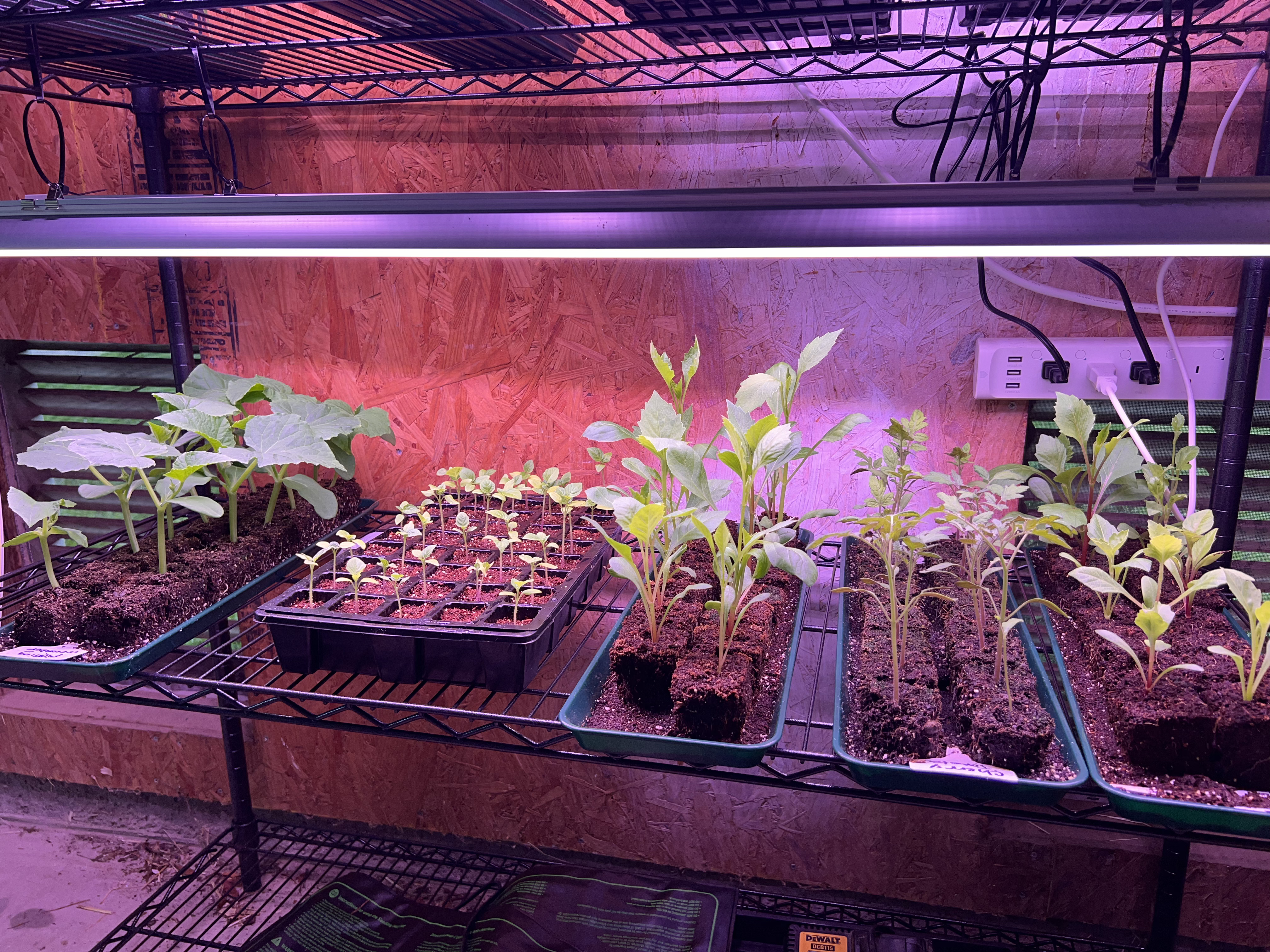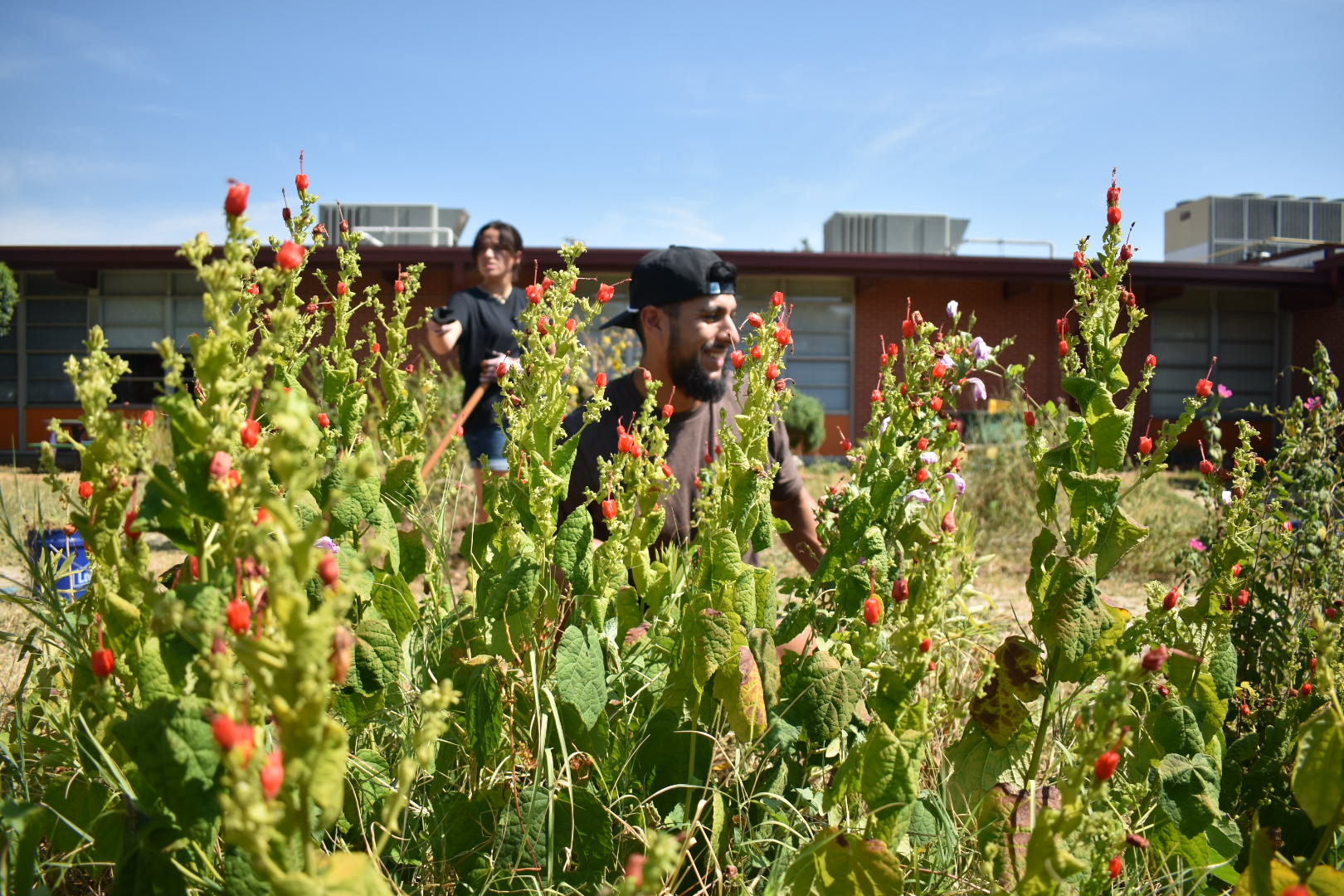Spring is right around the corner and it’s time to start those seeds indoors! Starting seeds indoors not only gives you a bit of a headstart on the spring growing season, it can also save you tons of money. Buying a pack of seeds with 10-20 seeds is way cheaper than having to buy each plant from the store. But starting seeds can be a bit of a learning curve, so when you start your seeds here are some things to keep in mind.
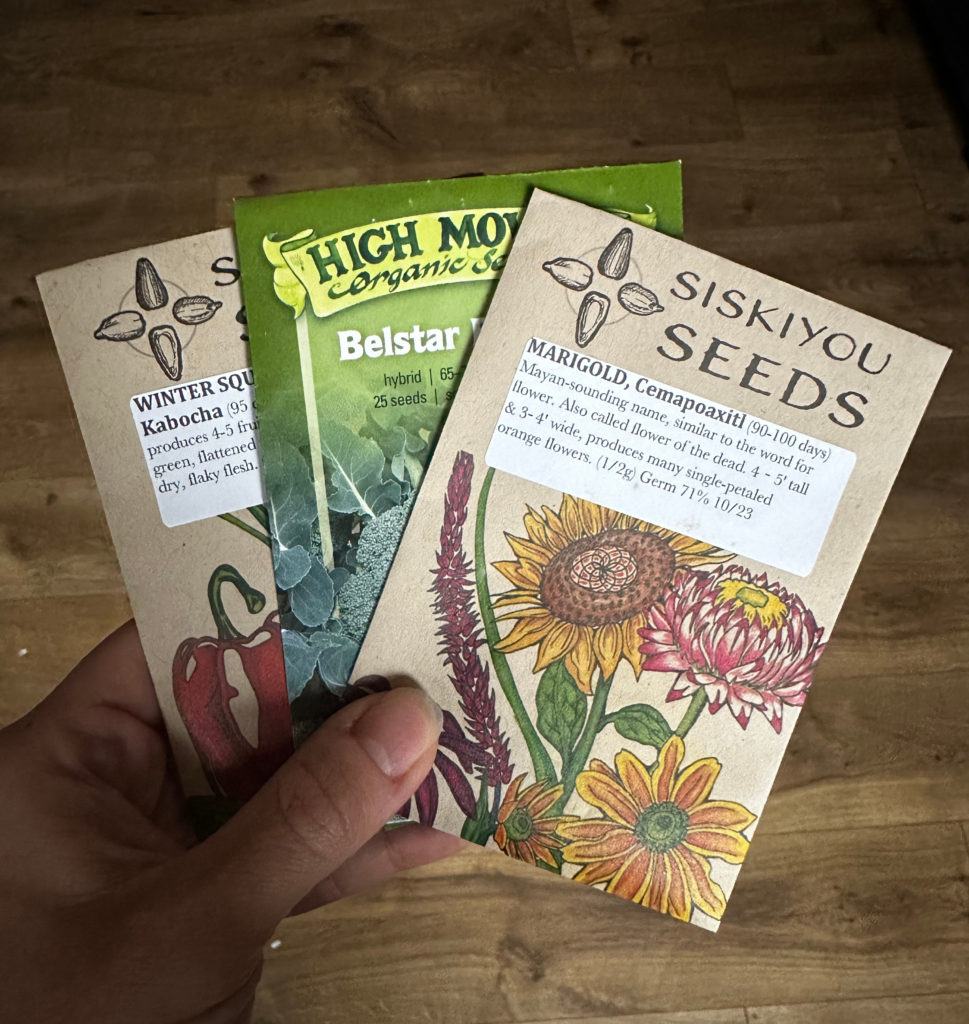
Find a nice warm spot for your seeds
Most seeds need to be between 68-86 degrees to germinate. Since seed starting falls in winter you’ll usually need a bit of help to get things going. We keep our seedlings in the garage so we use grow lights and heating mats, depending on what seeds we’re growing. (The ones linked above are the exact ones we use, but there are tons of options to choose from! Find what works best for your space) Things like tomatoes and peppers benefit from having the light source plus the extra heat on the bottom. If you’re keeping your seedlings inside your house you might not even need the grow light or heating mat. Sometimes just a nice sunny window will do. 🙂
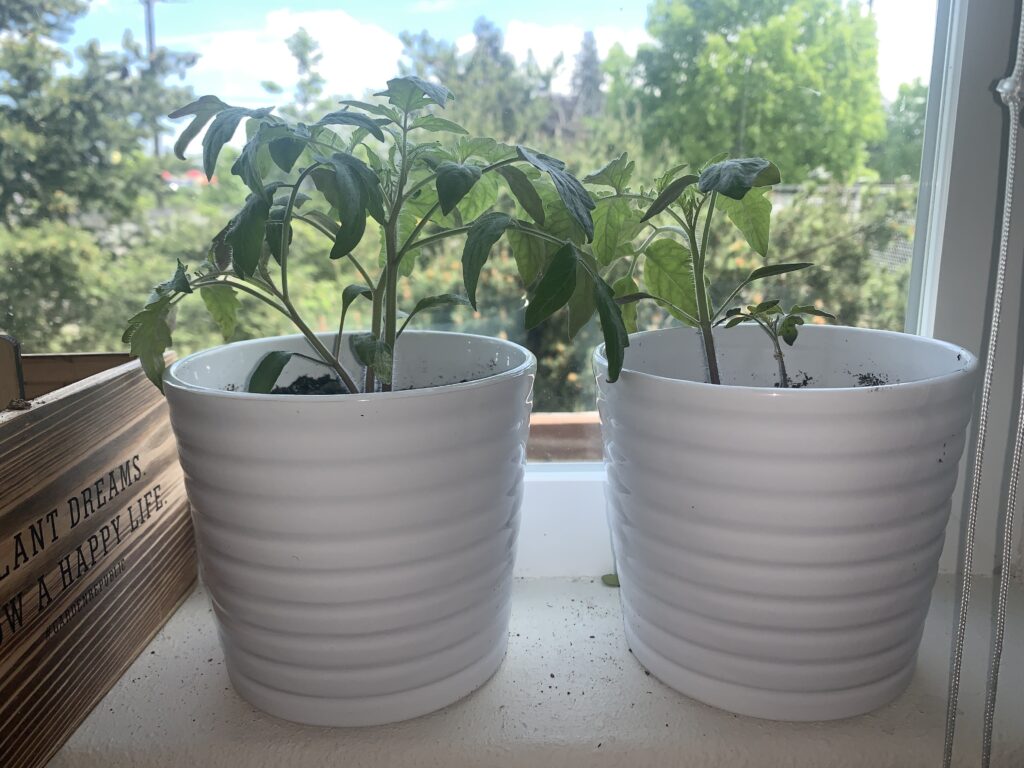
This is the set up we have had a ton of success with in our garage. We just use a simple shelf and zip tie these grow lights on each shelf and adjust as needed as the plants grow.
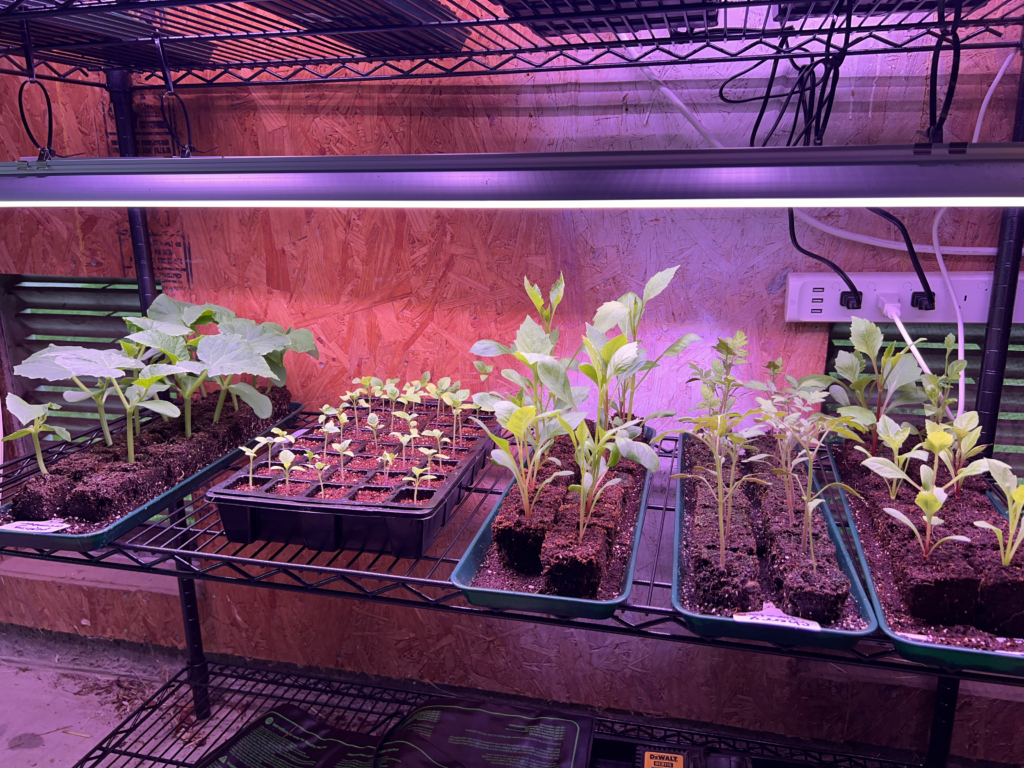
Mistakes we made so you don’t have to
Something we unfortunately had to learn the hard way is that you need to keep the light very close to the seed trays. If you place the lights too far away your seedlings they’ll essentially start reaching for the light and get leggy, like this.
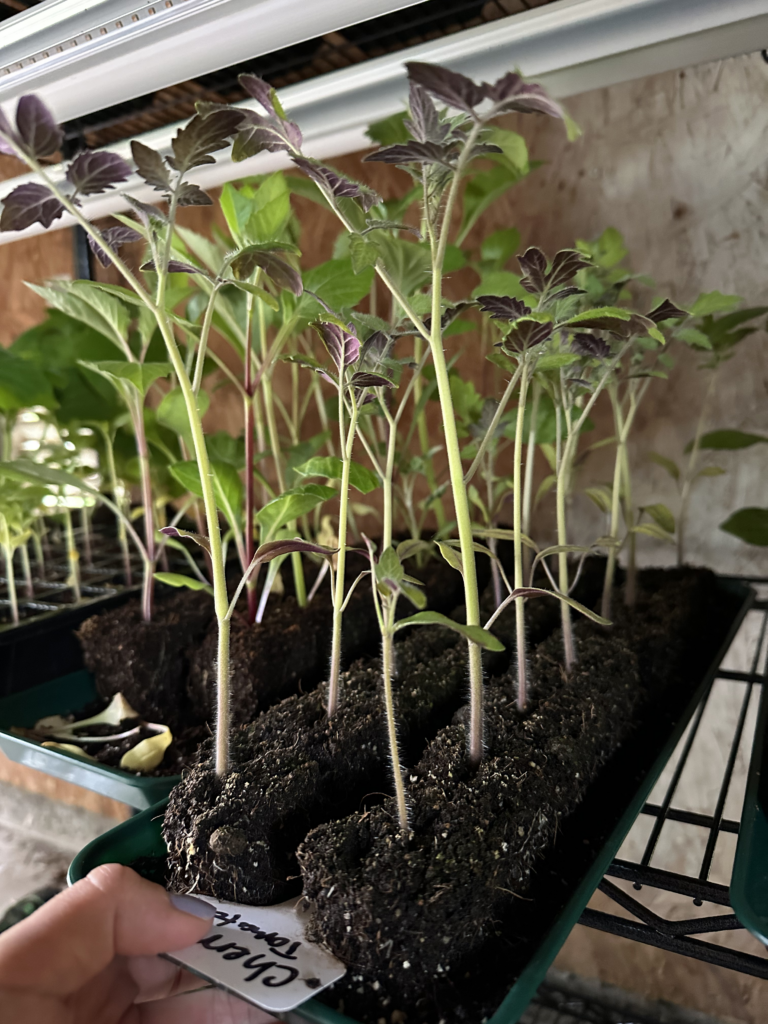
Another thing to note is that once your seeds germinate, meaning they’ve sprouted in the soil, it is time to remove the heating mat. Seeds just need that extra heat to initially get going. Too much bottom heat can cause the plants to get leggy.
Keep the humidity up the first week
Seedlings can also benefit from humidity. The easiest way to increase the humidity for your seedlings is to cover them. Either with a seed tray dome or even just some plastic wrap. But once again, like the heating mat, this should be removed as soon as the seeds germinate. Humidity is great, but too much can lead to fungal growth on plants.
Harden your seedlings off before you put them outside
Once your seedlings are established and it’s ALMOST time to transplant them in your garden you should start hardening them. Meaning you start getting them used to the outdoors before you put them out there full time. About a week before you are planning to transplant your seeds, bring them outside. Start with an hour or two a day and work your way up to leaving them outside over night.
Happy seed starting!
